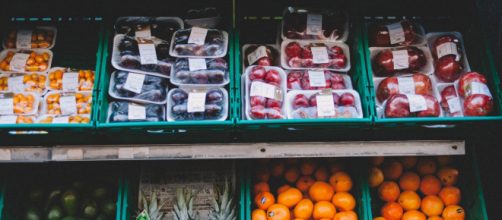Deciphering when food is no longer safe to eat is difficult for a lot of Americans. Varying food labels and lack of federal regulation contributes to this confusion. The United States Department of Agriculture estimates that food waste accounts for 30-40 percent of the American food supply. To reduce food waste, the USDA aims for a more unified labeling system soon but for now, there are still many different labels.
Different types of labels
The most common labels you will see are “sell-by," “use-by,” “best if used by/before” and finally an expiration date.
Contrary to popular belief, the only date referring to food safety is the expiration date. You should strongly consider tossing food that is beyond this date. The sell-by date is for retailers and not the consumer. It is similar to the FIFO rule -- First In, First Out -- a method used in restaurants. In other words, it is for inventory purposes.
It is used to ensure that older product is being put out in stores first and how long that product should stay on the shelves. Use-by and best-by dates refer to peak freshness. They merely refer to the date that the product would retain its ideal quality. Consumption past those dates is not necessarily unsafe. Baby formula is the only exception to this rule.
It is currently the only federally regulated product. The formula is not to be bought, sold or consumed past its use-by date.
Some helpful tips
Even knowing what these dates mean, there can still be confusion. Luckily, there are some practical tips you can follow to help you waste less. Cleveland Clinic’s Health Essentials website states that milk is usually safe for two to three days after the use-by date while eggs are safe for three to five weeks after you purchase them. Fish, chicken and ground meat are only safe one to two days after purchase. Lastly, keep dairy in the back of your fridge where it is best able to retain its coldest temperature.
The FDA argues that canned fruits and vegetables last indefinitely as long as they are not in extreme heat (90 degrees Fahrenheit or above) or freezing temps.
Highly acidic canned goods like tomatoes or fruits are best for 12-18 months after the expiration date while low-acid canned goods like meat and vegetables are best for 2-5 years after their best-by date. However, if cans are dented, rusted or swollen, they should be discarded regardless of the date.
Ultimately, trust your instincts when it comes to freshness. Warning signs that food might no longer be safe to eat could include a foul odor, mold, and change in color. It is also worth saying that improper food handling renders all of these dates useless. Be sure to keep all perishable foods properly refrigerated at all times. If you are still unsure, you can call 1-888-MPHotline (1-888-674-6854) the USDA hotline, with your meat and poultry questions. The hotline is open year-round Monday-Friday from 10 a.m.-4 p.m.


